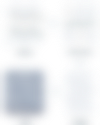The Right Material (For You)
All of our desk pads are made from premium, natural materials. They’re durable, minimal, and sized to fit your workspace. Read on to learn how the material we use impacts the desk pad and how you use it!
Vegetable-Tanned Leather
We use vegetable-tanned leather sourced domestically from the United States in our leather desk pads. The organic process preserves the natural character of the leather, and also allows it to age wonderfully. The texture is buttery smooth and supple, soft to the touch.

Rather than heavily processing the leather to make it blemish-free and uniform for mass production, we preserve the character and natural beauty of the material. Each desk pad is uniquely yours.

If you write a lot at your desk, this is the material for you—it’s the perfect material for writing.
The leather desk pad will last generations—and each generation will leave its mark, as the material interacts with how you use it and develops a patina over time. Water rings from cups can leave a mark, making coasters a nice accessory if you’d like to avoid the water marks. You’ll see the desk pad mature and change over time, in some cases warping slightly as it interacts with your environment. (In contrast, if you want your desk pad to look the same on day 1 as day 1000, we’d recommend our wool desk pad.)
The life of the cow is reflected in imperfections in the hide—scratches from fenceposts, bites from pesky flies—and the vegetable tanning process preserves this character.

Leather is our most premium material option, and it’s more than just a cut piece of leather—each is carefully laminated to a cork bottom to give a little extra refinement and cushion. Click here to learn more about the process.
Merino Wool
Our wool comes from merino sheep, which produce a very fine fibered wool. The wool is shorn from sheep and then felted together through a combination of pressure and steam into a 3 mm thick mat. The felting process creates a very strong, dense material.


Not all wool felt is created equal—we use 100% virgin merino wool, rather than synthetic, because the texture is supreme. We’ve tested many, many cheap alternatives to real wool, but the quality is poor and they feel scratchy to the touch. The premium feel is the only way to go.

It’ll look almost identical on day 1 and day 1000.
The wool desk pad is cushioned and dampening. It works with optical mice, but isn’t good for writing directly on (see leather if you need to write directly on it). The Small and Medium sizes slide easily on most desktop surfaces, making it a great choice if you like to move around your space, or to switch from digital to analog tasks. The wool is stain resistant, water resistant, and it doesn’t show use—on day 1000, it’ll look almost identical to how it looked on day 1.
Matte - Natural Linoleum
Natural linoleum is not what you think of when you hear ‘linoleum’—it’s made from a mixture of pure oxidised vegetable linseed oil and natural pine rosin, mixed with wood flour and calcium carbonate (usually from limestone).


It’s substantially higher quality than synthetic alternatives—it won’t stick to your skin like a synthetic, there’s no odor, and it is very durable. The furniture-grade product we use has a tooth similar to high quality paper, and a smooth feel on your skin.

The cork bottom provides added cushion, and it’s a great writing surface. You can slide the small and medium pads around easily if needed on your desk, but they stay put securely during normal use.
Feels like high-quality paper, with a subtle tooth and a smooth finish.
It’s stain resistant and easy to clean—it will show some signs of use, less than leather but more than wool. And, the accessible price point for a premium natural material is what really makes it stand out.
The Material Makes the Pad
A desk pad is an easy way to take your workspace to the next level. It’s the foundation you can build around, and you’ll see and touch it every day—it's worth obsessing over the right material. We hope this article helped, and if you'd like a 1-on-1 consultation with our team, click the button below to send us a note. We're happy to talk it through with you!
Premium Leather
Vegetable-tanned leather feels just as good as it looks—the labor-intensive tanning process preserves the character of the leather, ensuring your desk pad will age beautifully.
Merino Wool
Our classic wool felt desk pad focuses on the premium feel and warmth of merino wool—it resists fraying, the cut edges are crisp and clean, and the feel is soft and cushioned.
Naturally Simple
Our matte desk pads feature natural linoleum, made from linseed oil, natural pine rosin, wood flour and calcium carbonate. It provides a great writing surface that's smooth and soft, with a subtle tooth similar to premium paper.



































































































